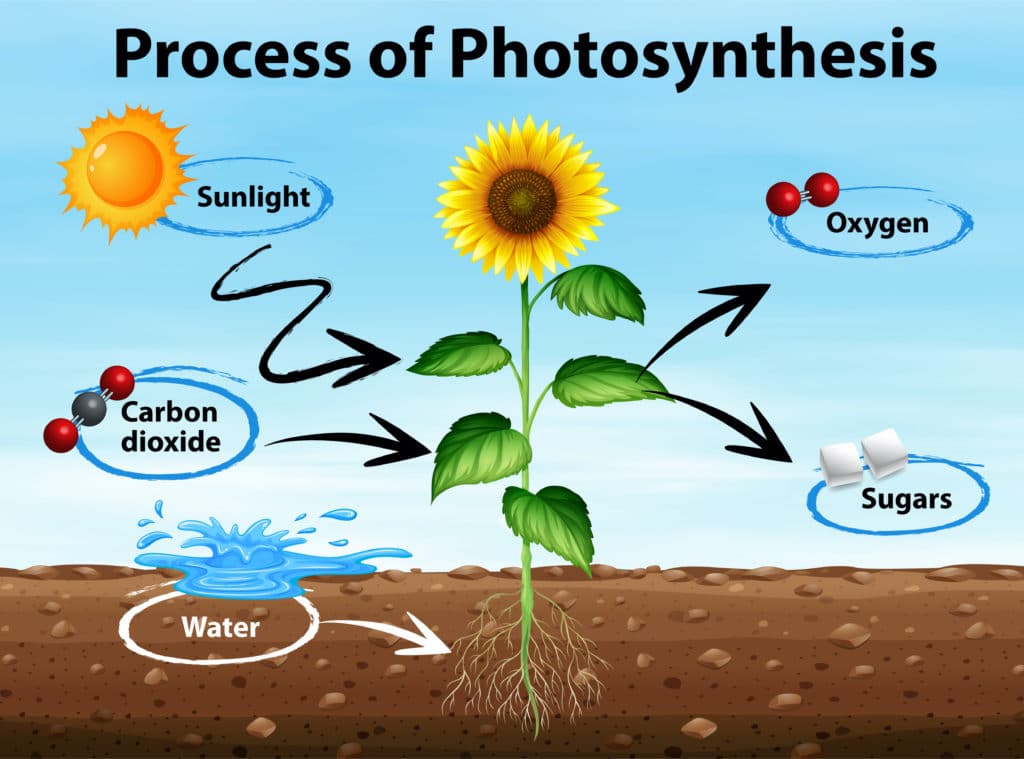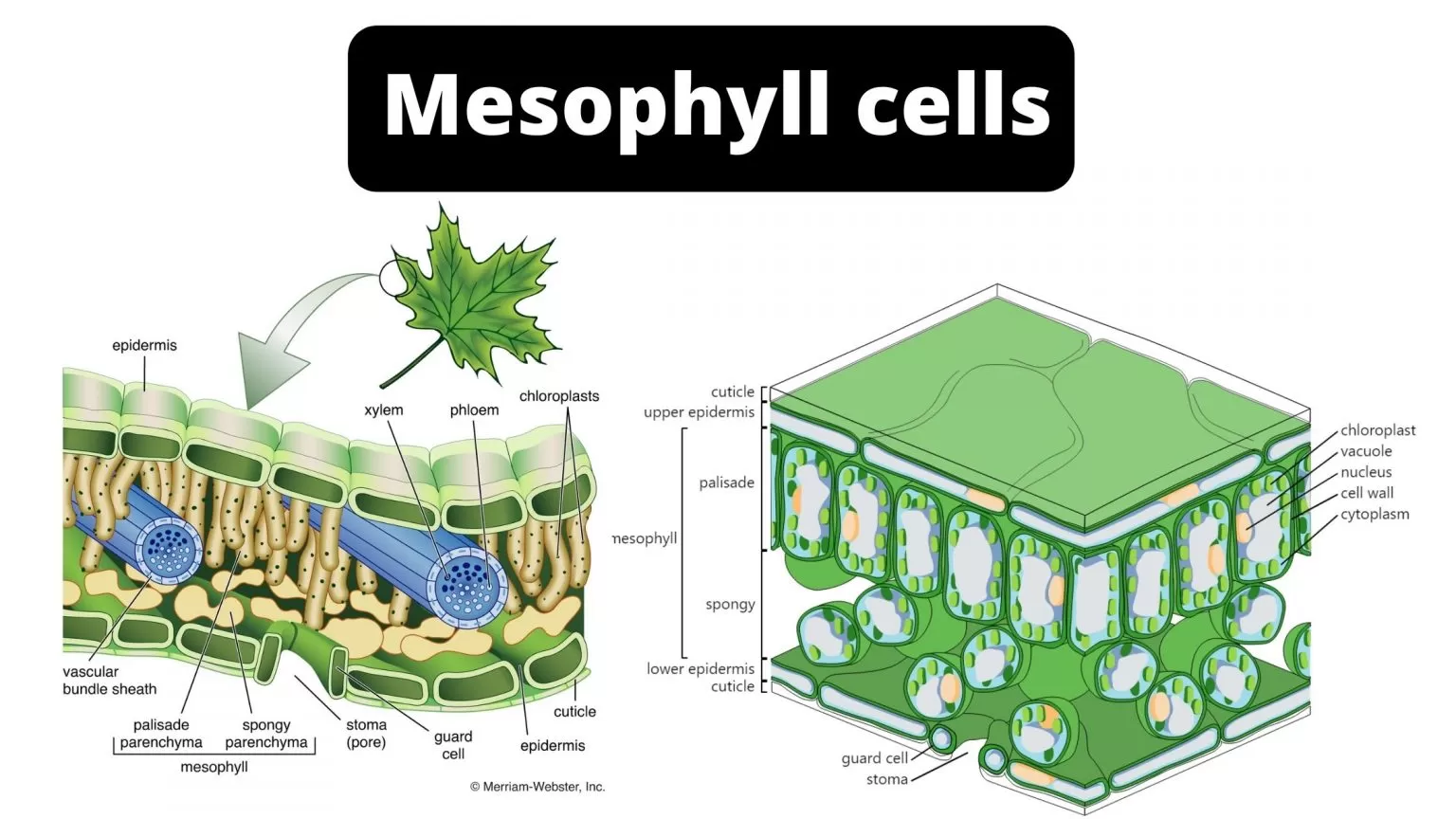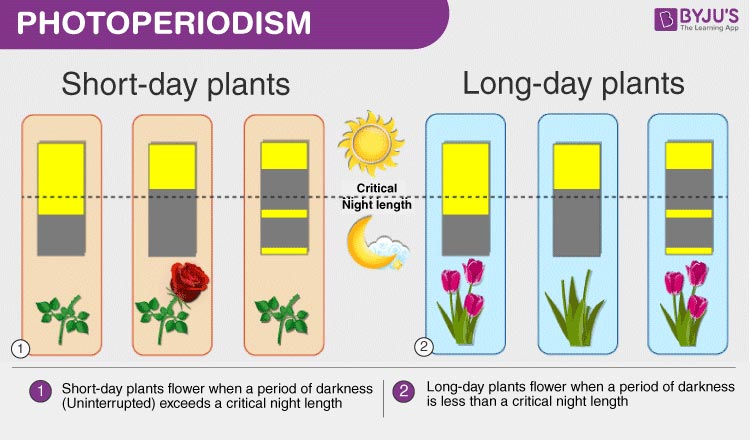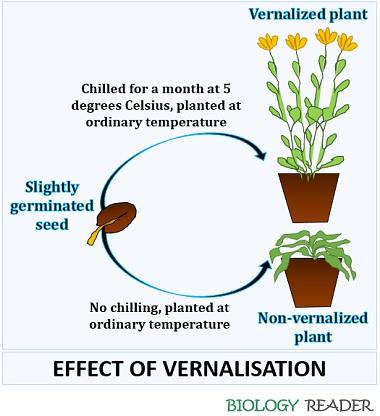CBSE Class 11 Biology Chapter 15 Revision Notes Part 2
Chapter 15: Plant Growth and Development Revision Notes Part 2
The three primary functions that drive plant growth and development are photosynthesis, respiration, and transpiration. The ability of a plant to regulate these activities has a significant impact on its ability to compete and reproduce. This guide will go over each, starting with photosynthesis.
Photosynthesis

Photosynthesis, which means “to bring together with light,” is the name of process through which plants generate organic food through inorganic raw materials. The capacity of plants to produce their sustenance is one of the most significant distinctions between plants and animals.
A plant takes energy from the sun, carbon dioxide from the air, and water from the soil to make food. During photosynthesis, carbon dioxide is divided into carbon and oxygen, water is added, and carbohydrates are formed. Oxygen is produced as a byproduct.
This can be illustrated by either of the below equations:
-
Carbon dioxide + Water + Sunlight = Sugar + Oxygen
-
6CO2 + 6H2O → C6H12O6 + 6O2
Photosynthesis takes place exclusively in the mesophyll layers of plant leaves and, in rare cases, mesophyll cells in the stem. Mesophyll cells are located between the top and lower epidermis of the leaf and contain multiple chloroplasts responsible for photosynthesis.

Elements Involved in Photosynthesis
5 elements are involved in the process of photosynthesis: chlororphyll, light, water, carbon dioxide, and temperature. Let’s talk about how each of these factors plays into this process below.
Chlorophyll
Chloroplasts contain chlorophyll, the pigment that gives plants their characteristic green color. Chlorophyll is in charge of capturing solar light energy. Chloroplasts are frequently oriented perpendicular to the incoming solar rays to absorb most sunlight.
Light
The availability of light is essential for photosynthesis. In general, as the intensity of sunlight increases, so does photosynthesis as long as other necessary elements are also present in required amounts. At a certain point, if light intensity continues to increase, the rate of photosynthesis will reach a plateau at which light intensity is no longer a limiting factor.
Water
Water is a basic element used in photosynthesis. It is taken up by the roots and transported upward through the plant’s xylem.
Carbon Dioxide
Carbon dioxide (CO2) enters a plant through its stomata. Photosynthesis in most plants varies throughout the day as stomata open and close. They typically open in the morning, close at lunchtime, reopen in the late afternoon, then close for good in the evening.
Because carbon dioxide is abundant in the atmosphere, it is not a limiting factor in plant development. However, it is rapidly depleted during photosynthesis and slowly restored in the atmosphere.
Temperature
Temperature is a crucial factor in photosynthesis, even though it is not an essential raw material involved. Photosynthesis is most active between 65° and 85°F and slows down at higher or lower temperatures.
Respiration
Carbohydrates produced during photosynthesis are valuable to plants because they can be turned into energy. This energy is gained through the process of Cellular Respiration, during which organisms combine oxygen with food to be utilized in cell development and the formation of new tissues
The chemical process of converting sugars and starches to energy is known as oxidation, and it is analogous to burning wood or coal to generate heat. Controlled oxidation in a living cell is called respiration, and chemically respiration can be illustrated as C6H12O6 + 6 O2 → 6 CO2 + 6 H2O + Energy.
Because respiration, unlike photosynthesis, is not light-dependent, it happens both at night and during the day.Respiration happens in all living things and all cells.

Transpiration
When the guard cells of a leaf shrink, the stomata open, and water is lost. This is known as Transpiration. As a result, more water is drawn through the plant from the roots. Around 90% of the water that reaches a plant’s roots is consumed during transpiration, while the remaining 10% is employed in chemical processes and plant tissues
The rate of transpiration is proportional to the size of the stomatal opening. Stomata account for only 1% of a leaf’s surface yet 90% of transpired water. Temperature, humidity, and wind or air movement influence the amount and rate of water loss. In hot, dry (low relative humidity), windy conditions, transpiration is frequently at its peak.
Differentiation, Dedifferentiation, and Redifferentiation
Differentiation is the process through which cells produced from the root apical and shoot apical meristems and the cambium develop and mature to execute specialised roles.
Redifferentiation is the process by which differentiated cells that have lost their capacity to divide are reconstructed from dedifferentiated cells and given the ability to execute specified activities.
Dedifferentiation is the process through which surviving differentiated cells restore their ability to divide.
Photoperiodism
Photoperiodism is the response of a plant to changes in day length over the course of the seasons. Some plants require a specific day or night duration to blossom or enter the reproductive phase of their life cycle.
Short-day plants are those that blossom only when the day length falls below a specific threshold. Rice is an example of a plant that grows in a short period of time. Long-day plants include spinach and sugar beets. With seasonal variations, these plants can regulate their flowering period by blossoming only when day or night durations exceed a specified threshold.
Not all plants have a short or long day. Some are day-neutral plants, which means that their flowering does not rely on the day’s duration. Blooming is not the only feature influenced by photoperiod—day length—though it has received the greatest attention from researchers.

Vernalization
Vernalization is the intentional stimulation of a plant’s blooming process by exposing it to extended cold in the winter. The word is often used to allude to the requirement for herbal (non-woody) plants to go into cold dormancy to develop new shoots and leaves. Plants have gained the potential to blossom after vernalization, though they may require additional seasonal signals or weeks of development before flowering.
Many plants grown in temperate areas require vernalization, or a period of cold winter temperatures, to commence or accelerate flowering. This guarantees that reproductive development and seed production occur in the spring and winter rather than in the fall. The required cold is frequently represented as chill hours. Temperatures for vernalization are typically between 1 and 7 degrees Celsius.

Sources
Plant Growth and Development. https://ncert.nic.in/textbook.php?kebo1=15-22. Accessed 16 Dec, 2021.
]]>
